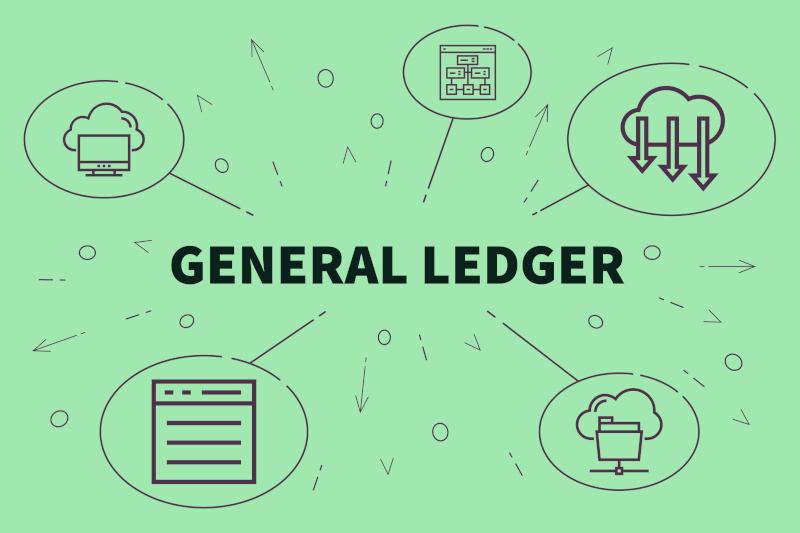A ledger is a fundamental component of accounting systems. It serves as the principal book where all financial transactions are systematically recorded. Here are some key points about ledgers:
Definition and Purpose:
- It also compiles and organizes transactions that have been initially recorded in the journal.
- It forms separate accounts for each transaction, categorized by account type (such as personal, real, and nominal accounts).
- Essentially, it provides a comprehensive record of all debits and credits.
Structure and Format:
- Ledgers can take various forms: bound registers, cards, or separate sheets maintained in a loose-leaf binder.
- Each account is ideally opened on a separate page or card within the ledger.
- In larger organizations, accounts are often ordered in a specific manner, such as following the sequence in the profit and loss account or balance sheet.
- An index is typically provided for easy reference, and some organizations assign a code number to each account.
Importance:
- It is also crucial for assessing the net result of transactions related to a specific account on a given date.
- For instance, it allows management to determine the amount due from a customer or the firm’s outstanding payments to suppliers.
- Unlike the journal, which records transactions chronologically, the ledger facilitates classification and easy retrieval of information.
Mission Statement
it’s mission also centers around empowering individuals and businesses to securely navigate the digital asset landscape. They envision a future where users control their valuable digital assets with freedom and ownership. By pioneering secure hardware wallets like the Ledger Nano series, It also offers users a safe haven for cryptocurrencies and other digital valuables. Their commitment extends beyond storage with Ledger Live, a companion app for managing assets and exploring Web3 applications. It even offers business solutions through Ledger Enterprise, ensuring secure management of digital assets for institutions.
Formatting & Style
A ledger is typically organized in a T-format account. Here’s how it looks:
- The left side represents debits, and the right side represents credits.
- Columns include:
- Date: The date of the transaction.
- Particulars: A brief description of the transaction.
- Journal Folio (JF): The reference to the journal entry where the transaction was initially recorded.
- Amount: The monetary value associated with the transaction.
Purpose and Importance:
- The ledger serves as the principal book of accounts where transactions are systematically classified.
- It accumulates and organizes information from the journal entries.
- Unlike the journal, which records transactions chronologically, the ledger provides a classified view of each account’s activity.
- It allows business owners to assess the accumulated effect of transactions on financial statements.
Classification and Structure:
- Each account (e.g., cash, accounts payable, inventory) has a separate page or section within the ledger.
- The account title is written at the top, usually in bold capital letters.
- The ledger account is prepared in a ‘T’ shape, with the left side representing debits and the right side representing credits.
Rigor and Validation
Security Assessment by Ledger Donjon:
- The Ledger Donjon, an internal security evaluation lab at Ledger, plays a critical role in ensuring the robustness of Ledger products.
- Comprising world-class experts with backgrounds in security and smartcard industries, the Donjon team collaborates closely with Ledger’s firmware development and hardware teams.
- Their primary functions include conducting internal and external security assessments.
- They continuously search for vulnerabilities in Ledger products and those of Ledger’s providers.
- In the context of building a seed recovery service, the Donjon identifies security challenges and contributes to guaranteeing maximum security for users1.
Genesis of Ledger Recover Series:
- The Ledger Recover series, developed in partnership with Coincover, addresses self-custody without compromising security.
- In Part 1, it introduces the core security feature: splitting the Secret Recovery Phrase into shares.
- Part 2 focuses on securely distributing these shares to backup providers using cryptographic tools.
- Part 3 ensures safe storage of shares, preventing collusion among providers.
- Part 4 emphasizes identity verification for access control.
- Part 5 covers operational security, including infrastructure, governance, and incident response.
- Throughout this process, rigorous validation and audits maintain the highest level of security1.
Ledger’s Holistic Approach:
- Ledger’s security model combines technical innovations, rigorous testing, and user awareness.
- It defends against digital and physical threats, ensuring the safety of Ledger devices.
- By adhering to these principles, Ledger provides a robust defense against attacks2.







